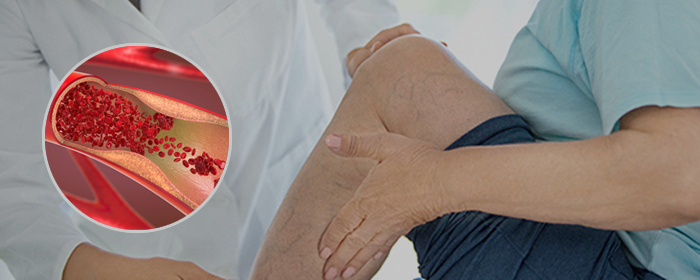Services
Peripheral Vascular Disease

Peripheral vascular disease (PVD) is a blood circulation disorder that causes the blood vessels outside of your heart and brain to narrow, block, or spasm. This can happen in your arteries or veins. PVD typically causes pain and fatigue, often in your legs, and especially during exercise. The pain usually improves with rest.
It can also affect the vessels that supply blood and oxygen to your: arms, stomach and intestines, kidneys
In PVD, blood vessels become narrowed and blood flow decreases. This can be due to arteriosclerosis, or “hardening of the arteries,” or it can be caused by blood vessel spasms. In arteriosclerosis, plaques build up in a vessel and limit the flow of blood and oxygen to your organs and limbs. As plaque growth progresses, clots may develop and completely block the artery. This can lead to organ damage and loss of fingers, toes, or limbs, if left untreated.
What are the types of PVD?
The two main types of PVD are functional and organic PVD.
Functional PVD means there’s no physical damage to your blood vessels’ structure. Instead, your vessels widen and narrow in response other factors like brain signals and temperature changes. The narrowing causes blood flow to decrease. Organic PVD involves changes in blood vessel structure like inflammation, plaques, and tissue damage.
What causes PVD?
Functional PVDYour vessels naturally widen and narrow in response to your environment. But in functional PVD, your vessels exaggerate their response. Raynaud’s disease, when stress and temperatures affect your blood flow, is an example of functional PVD. The most common causes of functional PVD are:
Emotional stress
Cold temperatures
Operating vibrating machinery or tools
Drugs
Organic PVDOrganic PVD means there’s change in the structure of your blood vessels. For example, the plaque buildup from arteriosclerosis can cause your blood vessels to narrow. The primary causes of organic PVD are:
smoking
high blood pressure
diabetes
diabetes
What are the risk factors for PVD?
You’re at higher risk for PVD if you:
Are over age 50
Are overweight
Have abnormal cholesterol
Have a history of cerebrovascular disease or stroke
Have heart disease
Have diabetes
Have a family history of high cholesterol, high blood pressure, or PVD
Have high blood pressure
Have kidney disease on hemodialysis